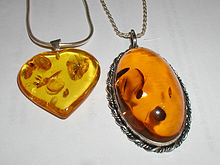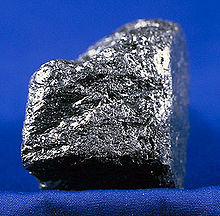Carbon
Carbon (lat. Carboneum) is a chemical element in the Periodic Table of Elements, its symbol is C, it has 4 bonds and its proton number is 6. Carbon forms the basic building block of all organic compounds and therefore all living organisms. Carbon compounds are one of the foundations of the world economy, fossil fuels such as natural gas and coal serve as an energy source for electricity production and heating, petroleum processing products (gasoline, diesel, heavy oils) are essential for driving internal combustion engines. Products of the chemical industry based on carbon are part of everyday life, whether they are plastics, artificial fibers, coatings or medicines.
Forms of carbon
Elemental carbon
Carbon is a typical non-metallic element that occurs as a mineral in an elemental state in nature in two basic modifications, and in the last 20 years or so, a third modification was created in the laboratory:
Graphite is composed of carbon that crystallizes in hexagonal flakes and is one of the softest known minerals. This feature is used e.g. in the production of pencils, in which a ground mixture of graphite and limestone forms the basic component of the stick intended for writing or drawing.
Diamond is made of carbon, which crystallizes in a cubic system, is a very valuable mineral and is one of the hardest materials. The weight of diamonds is given in carats, the largest diamond ever found was the Cullinan, which weighed 3,106 carats (621.2 g) in the rough when found in South Africa.[1]
Fullerenes are newly discovered spherical molecules, composed of five or more often six-membered rings of carbon atoms. In space, these molecules are arranged in a spherical shape and are extremely resistant to external physical influences. So far, the most stable known fullerene is a molecule containing 60 carbon atoms. Fullerenes are artificially prepared by laser pyrolysis of organic compounds. The 1996 Nobel Prize in Chemistry was awarded to Robert F. Curl, Richard E. Smalley and Harold W. Kroto for the discovery and study of the properties of fullerenes. Currently, research into the properties and preparation methods of fullerenes is very intensively investigated in many top scientific institutions around the world.
Graphene is similar to graphite with the difference that it is the thinnest and hardest material in the world. It was discovered by Andre Geim and his colleague Konstantin Novoselov in 2004. Graphene's electrons seem to defy physics. They move at almost the speed of light without bumping into each other. This can be used in transistors, memories or microprocessors.
Occurrence and use
Graphite
Graphite
Graphite is a mineral found in many places on Earth. Some of the largest graphite mines are located in the USA (Texas and the state of New York), Mexico, India and Russia. Graphite is e.g. also a component of soot, which is created by burning fossil fuels. However, it is in particles so small that soot has the properties of amorphous carbon.
Graphite is mainly used industrially for the production of pencils. At the same time, it is first ground together with limestone very finely and then pressed into a suitable shape. In its pure form, without limestone, it is pressed into carbons for painters and graphic artists.
Another important use of graphite is in the metallurgical industry. Due to its very good heat resistance, containers are made from it, the so-called molds into which molten metals and their alloys are poured. This prevents contamination of the molten metal with the metal from which the mold would have to be made. Graphite is also used to produce electrodes for the electrolytic production of aluminum from bauxite and cryolite melts or for the production of silicon from silicon dioxide melts.
Glass graphite[
An artificially produced form of graphite is the so-called glassy carbon, which is characterized by high density, low porosity and very good chemical and mechanical resistance. In practice, it is produced by precisely controlled long-term high-temperature (pyrolytic) decomposition of organic substances on the surface of normal graphite.
Thanks to the extraordinary physical and chemical properties of glass graphite, its practical use, despite its high price, is still expanding.
Important for electrochemistry is the fact that glass graphite electrode surfaces are chemically highly resistant and it is possible to reach a high positive potential on them without their dissolution as with normal metal electrodes. This can be used both in analytical chemistry when investigating the electrochemical properties of organic molecules, and also for preparative oxidation in the production of some compounds.
The analytical method GFAAS (Flameless Atomization Atomic Absorption Spectrometry) uses a cell to vaporize the analyzed sample, which is heated up to a temperature of around 3000°C in a few seconds. Covering the inner surface of this cuvette with glass graphite dramatically increases its durability and prolongs its usability compared to a classic graphite cuvette.
In metallurgy, tubes covered with glass graphite are used for the purification of metals by the zonal melting method, in which the entire process takes place.
Laboratory tools with a surface made of glass graphite achieve the same or even better chemical resistance than tools made of platinum or its alloy with rhodium.
Amber

amber pendants with embedded fossils
A special form of carbon mineral is represented by amber - mineralized remains of Tertiary resin around 50 million years old. The average chemical composition of amber was determined to be C10H16O. The basic color of amber is golden yellow, but we can also find quite transparent, red, coffee and white varieties.
It is found in Europe as the fossilized resin of pine trees and in Central America and Mexico where it is the resin of the tropical wood copal.
The importance of amber is mainly in the production of jewelry and decorative items. Probably the most significant project in this field was the famous Amber Room, a room lined with beautiful artistically processed amber blocks in the St. Petersburg Tsar's Palace. During World War II, German occupation troops dismantled the Amber Room and took it to an unknown location. To this day, the search for this cultural monument is unsuccessful.
Another meaning of amber is paleontological. The bodies of Tertiary insects, pollen of plants of that time and other artifacts are very often perfectly preserved in the mass of amber finds.
It is interesting that amber has not yet been produced artificially, despite the fact that its chemical composition and the expected process of formation are well known.

